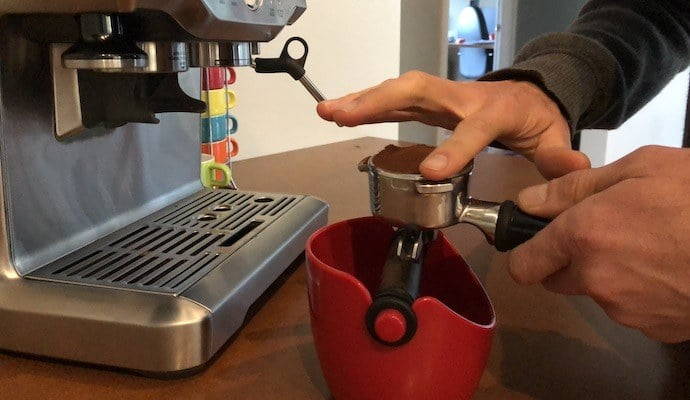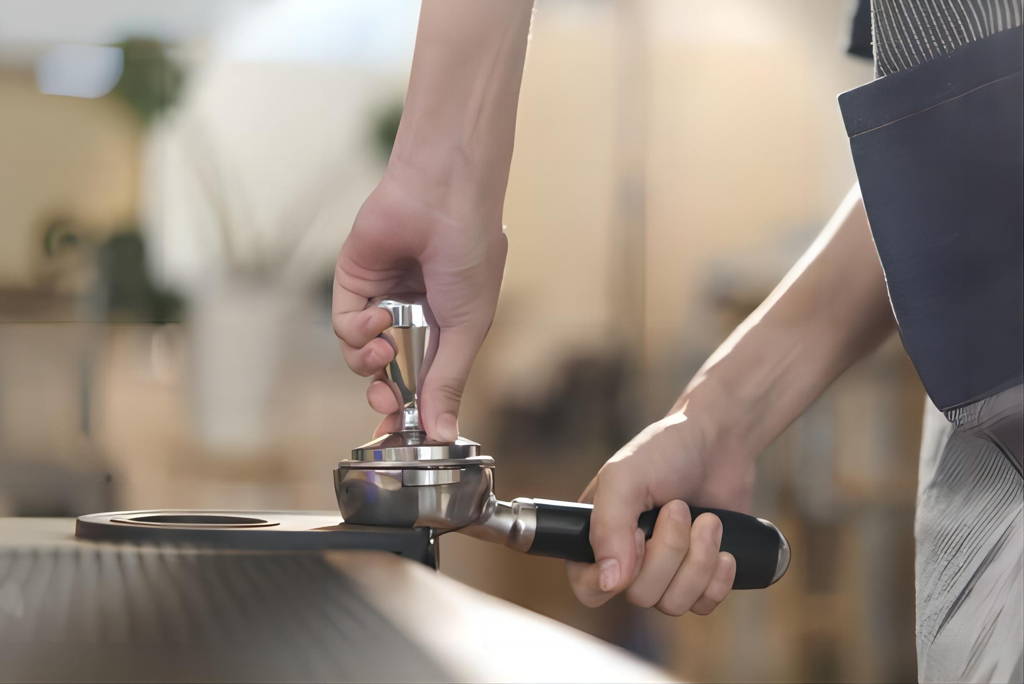Tamping may seem like a simple process of compressing coffee grounds, but there is a fascinating science behind it that directly affects the extraction of flavors during brewing. In this section, we will dive into the technical aspects of tamping, understanding how it influences water flow, pressure, and extraction rates.
By grasping the science behind tamping, you'll gain valuable insights that will help you refine your technique and produce consistently outstanding espresso shots. Let's unravel the secrets behind the tamping process and its impact on the art of espresso making.
Water Flow and Pressure Distribution
Tamping plays a critical role in controlling water flow through the coffee grounds during the brewing process. When the coffee is evenly and firmly packed into the portafilter, water encounters consistent resistance as it passes through the puck. This resistance is crucial in regulating the flow rate of water, allowing it to permeate the coffee grounds at an optimal rate.
If the coffee bed is unevenly tamped or contains gaps, water will take the path of least resistance, leading to channeling. Channeling occurs when water rushes through certain areas of the puck, bypassing other areas entirely. As a result, some coffee grounds will be over-extracted, while others remain under-extracted, resulting in an imbalanced and lackluster shot.
By achieving a level and uniform coffee bed through proper tamping, you ensure that water flows evenly through all the coffee grounds, promoting an even extraction and a harmonious flavor profile in your espresso.
Extraction Rates and Flavor Profile
The extraction rate refers to the speed at which water dissolves the soluble compounds in coffee, extracting the desirable flavors, aromas, and oils. Controlling the extraction rate is pivotal in crafting a well-balanced and flavorful shot of espresso.
An under-extracted shot, which occurs when water flows too quickly through the coffee, leads to a sour and thin-tasting espresso. On the other hand, an over-extracted shot, resulting from water passing too slowly through the puck, produces a bitter and astringent taste.
Proper tamping ensures that the coffee particles are packed densely enough to regulate the flow rate of water, preventing both under-extraction and over-extraction. Achieving the right balance allows the full range of flavors and aromas locked within the coffee grounds to be extracted, resulting in a rich and delightful cup of espresso.
Consistency is Key
Consistency in tamping is crucial for achieving consistent extraction and, consequently, consistent coffee quality. Professional baristas emphasize the significance of replicable tamping techniques to ensure that each shot is identical, regardless of who is making it.
By consistently applying the right amount of pressure, using the same tamping technique, and maintaining a level coffee bed, you eliminate variables that could lead to disparities in taste from shot to shot. This level of consistency is essential for creating a signature espresso that customers can expect and enjoy every time they visit your coffee shop.




